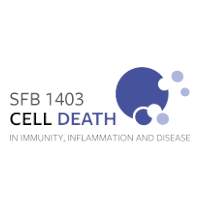Substrate-induced condensation activates plant TIR domain proteins.
Abstract
Plant nucleotide-binding leucine-rich repeat (NLR) immune receptors with an N-terminal Toll/interleukin-1 receptor (TIR) domain mediate recognition of strain-specific pathogen effectors, typically via their C-terminal ligand-sensing domains. Effector binding enables TIR-encoded enzymatic activities that are required for TIR–NLR (TNL)-mediated immunity. Many truncated TNL proteins lack effector-sensing domains but retain similar enzymatic and immune activities. The mechanism underlying the activation of these TIR domain proteins remain unclear. Here we show that binding of the TIR substrates NAD+ and ATP induces phase separation of TIR domain proteins in vitro. A similar condensation occurs with a TIR domain protein expressed via its native promoter in response to pathogen inoculation in planta. The formation of TIR condensates is mediated by conserved self-association interfaces and a predicted intrinsically disordered loop region of TIRs. Mutations that disrupt TIR condensates impair the cell death activity of TIR domain proteins. Our data reveal phase separation as a mechanism for the activation of TIR domain proteins and provide insight into substrate-induced autonomous activation of TIR signalling to confer plant immunity.
Read more at Nature. 2024 Mar 13.
